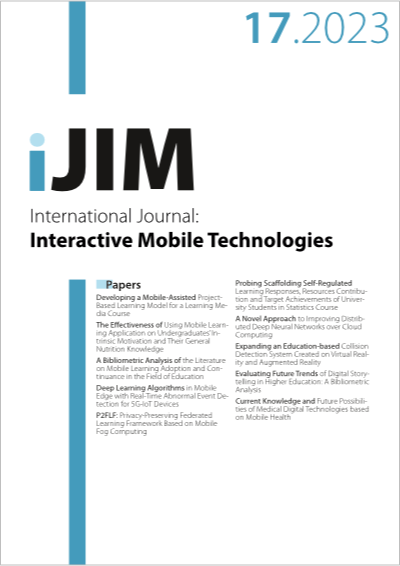Current Knowledge and Future Possibilities of Medical Digital Technologies based on Mobile Health
DOI:
https://doi.org/10.3991/ijim.v17i17.42801Keywords:
mhealth; Medical digital technologies; therapies; portable health clinic; decision-tree model; Medical apps (MAs);Abstract
Medical digital technologies have the potential to improve public access to healthcare by enhancing its flexibility. The availability of complementary details about health, ailments, complications, and the most recent advancements in biomedical research are all included. Diagnostic and medical services are now becoming more available and accessible, especially in low-income countries. Regarding digital health technology, there are still a lot of challenges that need to be overcome, such as dependability, safety, testing, and ethical concerns. We propose that mobile technology should enhance rather than replace the psychiatrist-patient connection in the existing environment of inadequate regulatory oversight and scientific research to lessen possible clinical and moral harm to patients at risk. We identify potential areas of moral conflict between consumer-driven mobile businesses and healthcare practice and create a decision tree model for putting ethical safeguards in place. Informed consent, confidentiality, and shared treatment expectations are the main areas of attention for this paradigm when it comes to risk management in the therapeutic partnership. To comprehend the utility, capacity, and limitations, this study covers recent breakthroughs in mobile technologies, their applications, and a comparative analysis of their performance metrics. Understanding the weaknesses of current technologies can facilitate the creation of new frameworks with increased performance capabilities and superior service quality.
Downloads
Published
How to Cite
Issue
Section
License
Copyright (c) 2023 Anas Salameh, Ibrahim A. Abu-AlSondos , Noor Hidayah Abu, Aizul Nahar Harun

This work is licensed under a Creative Commons Attribution 4.0 International License.


